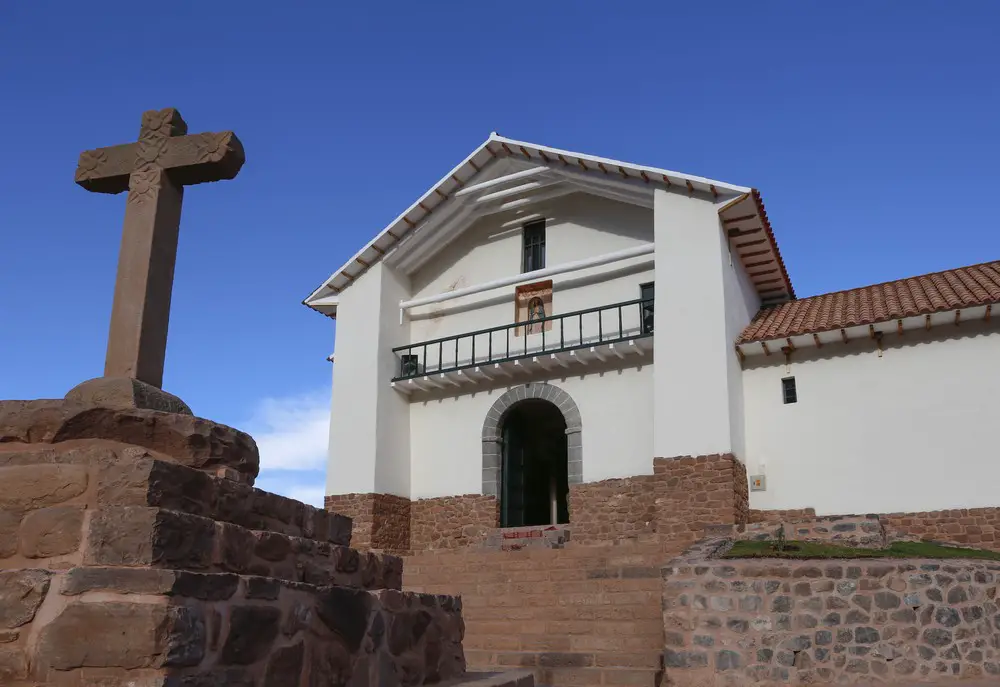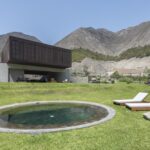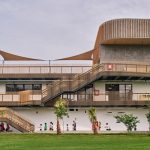Earthen Architecture Conservation, Peruvian seismic retrofitting project, Kuñotambo architecture
Conservation of Earthen Architecture
Seismic Retrofitting Project in Peru, South America: News
post updated 24 June 2025
Getty Conservation Institute Celebrates Major Advances In The Conservation Of Earthen Architecture Across Latin America
The completion of seismic retrofitting and conservation efforts at the 17th-century Church of Kuñotambo is a case study for conservation efforts in other regions of Latin America
Seismic Retrofitting Project team, Jim Cuno (President and CEO of the J. Paul Getty Trust) and local authorities:
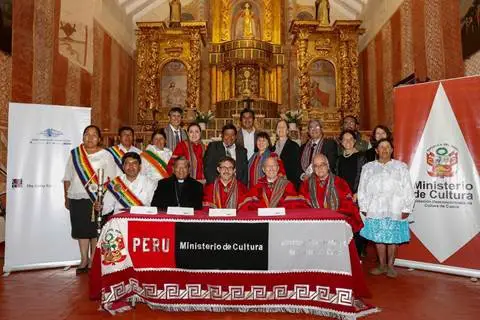
photo Courtesy J. Paul Getty Trust
June 21, 2019
Conservation Of Earthen Architecture Across Latin America
LOS ANGELES – The Getty Conservation Institute (GCI), in partnership with the Dirección Desconcentrada de Cultura de Cusco (DDC-C), celebrated on June 19 the results of a 10-year collaboration to seismically retrofit and conserve the 17th-century Church of Kuñotambo as part of the GCI’s Seismic Retrofitting Project (SRP). The work could impact how the conservation of culturally and historically important earthen buildings is addressed across Latin America.
Altar of the church of Kuñotambo after conservation:
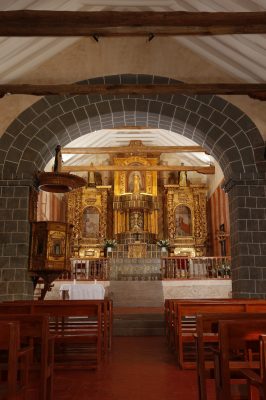
photo Courtesy J. Paul Getty Trust
The church was unveiled and rededicated at an event at which residents of Kuñotambo celebrated project’s completion. It was attended by representatives of the Ministry of Culture of Peru, the DDC-C, James Cuno, president and CEO of the J. Paul Getty Trust, as well as staff of the GCI’s Buildings and Sites department responsible for management of the project.
Exterior of the church of Kuñotambo after conservation:
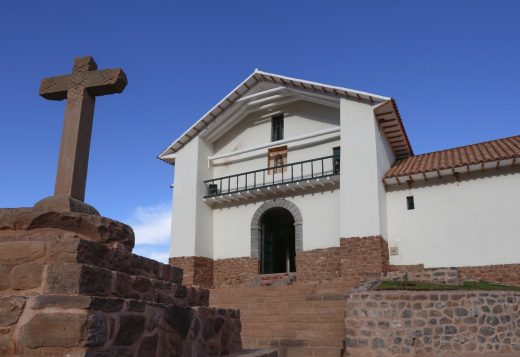
photo Courtesy J. Paul Getty Trust
“Earthen architecture is among the oldest and most prevalent building types in the world, and faces many threats to its preservation, particularly earthquakes” says James Cuno, president and CEO of the J. Paul Getty Trust. “The work of the GCI and project partners at Kuñotambo is not only valuable to the community, but significantly advances ways we can protect earthen buildings around the world from the destructive effects of earthquakes.”
Conservation Of Earthen Architecture Across Latin America – video
Buildings made with earthen materials can be extremely vulnerable to earthquakes and subject to sudden collapse during seismic events, especially if a building has been poorly maintained. The Seismic Retrofitting Project began in 2009 as part of the GCI’s Earthen Architecture Initiative, and grew out of many years of GCI research into the seismic strengthening of earthen buildings. The objective of the SRP is to adapt high-tech retrofitting techniques to better match the equipment, materials, and technical skills available in many countries with earthen structures.
Interior view of the wall paintings and statue of Saint Santiago, patron saint of the church of Kuñotambo:
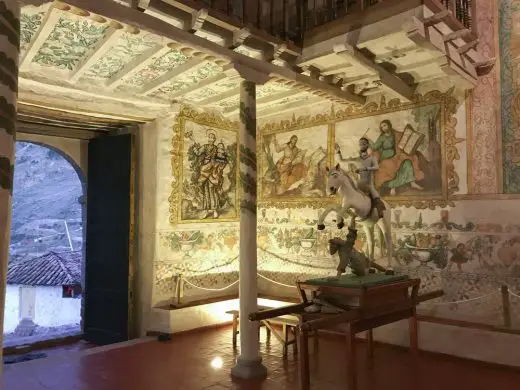
photo Courtesy J. Paul Getty Trust
The first three phases of the project included identification and assessment of four prototype buildings in Peru representative of typologies across Latin America, as well as laboratory testing, in-situ testing, and numerical analyses of the four selected structures. The project is now in its final phase, and includes the design and implementation of retrofitting and conservation measures at two of the prototype buildings—the Cathedral of Ica and the Church of Kuñotambo. The seismic retrofitting techniques developed for both of these historic buildings can be applied to similar structures in the region and elsewhere in order to make them more seismically safe.
The Church of Kuñotambo is the most prominent building in the Comunidad Campesina Kuñotambo, a remote agrarian village of 500 inhabitants in the Andes, located approximately 35 km south-east of the city of Cusco. Owned by the Roman Catholic Archdiocese of Cusco, the church has been in continuous use as a place of worship since its original construction in 1681. The church was built with thick mud brick walls and buttresses over a rubble stone masonry foundation and a wood-framed gable roof. The interior of the church features beautifully executed wall paintings depicting saints and other figurative and geometric motifs.
Interior view of the wall paintings and statue of Saint Santiago, patron saint of the church of Kuñotambo with the bell tower:
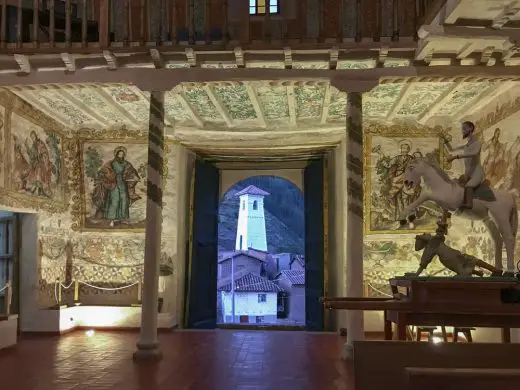
photo Courtesy J. Paul Getty Trust
“This project is so meaningful not only because of the historical significance of the church, but because it is still actively used as a place of worship by the community” says Freddy Domingo Escobar Zamalloa, director of the DDC-C. “The participation of the community in the work undertaken at the church was integral to the project.”
Despite its historic and artistic significance, the church was in a fragile state when the GCI began its collaboration with the DCC-C in 2009. The structural performance of the building was severely compromised by a leaking roof, inadequate or broken connections of the roof framing, the loss of several exterior buttresses that weakened the walls, and settlement of the foundation that caused walls to lean and separate from the main structure.
A program of engineering assessment and study began in 2011, conducted by the GCI and consultants from the Lima-based Pontificia Universidad Católica del Perú (PUCP) and the Universidad do Minho of Portugal. These studies aimed to identify the properties of the building materials and construction systems in order to create accurate models of the building’s behavior during an earthquake.
Based on the results of the modeling, a design for retrofitting was proposed which used local materials and techniques to stabilize and strengthen the structure. In conjunction with this work, wall paintings conservators began an in-depth study and program of testing and stabilization to protect the site’s wall paintings during construction.
The retrofitting included strengthening the church’s foundation, reconstruction of supporting buttresses and the installation of timber ring beams, corner keys and roofing. The church’s gilded 18th-century altar was also conserved, in addition to sculpture and other artworks. Final conservation of the wall paintings and finishing of the exterior was completed this spring.
“We are very pleased with the long-term collaboration with the GCI and the results of the conservation project at Kuñotambo,” says Ulla Sarela Holquist Pachas, minister of culture of Peru.
The Implementation of seismic retrofitting and repair will begin this year on the Cathedral of ICA, the second of the SRP prototypes.
The Kuñotambo project received support from the GCI Council and Friends of Heritage Preservation.
###
The J. Paul Getty Trust is an international cultural and philanthropic institution devoted to the visual arts that includes the J. Paul Getty Museum, the Getty Research Institute, the Getty Conservation Institute, and the Getty Foundation. The J. Paul Getty Trust and Getty programs serve a varied audience from two locations: the Getty Center in Los Angeles and the Getty Villa in Pacific Palisades.
The Getty Conservation Institute (GCI) works internationally to advance conservation practice in the visual arts—broadly interpreted to include objects, collections, architecture, and sites. The Institute serves the conservation community through scientific research, education and training, field projects, and the dissemination of information. In all its endeavors, the GCI creates and delivers knowledge that contributes to the conservation of the world’s cultural heritage.
Conservation of Earthen Architecture images / information received 200619 from The J. Paul Getty Trust
Location: Peru, South America
Peruvian Architecture
New Peruvian Architectural Designs – chronological list
Ave House, Cerro Azul, Lima
Design: Arq. Martin Dulanto Sangalli
photo : Juan Solano
AVE House, Lima
Casa Lapa, Pucusana, Lima, Perú
Design: Arq. Martin Dulanto Sangalli
photo : Juan Solano
Casa Lapa, Lima
New Lima Properties
Casa A, south of Lima
Design: BORDE Arquitectos
photography: Roberto Zamalloa
Casa A Lima
Memory House in Sur, Asia, Lima
Design: Chetecortes Architects
photograph : Nadia Riva
Memory House Lima
Comments / photos for the Conservation Of Earthen Architecture Across Latin America page welcome

